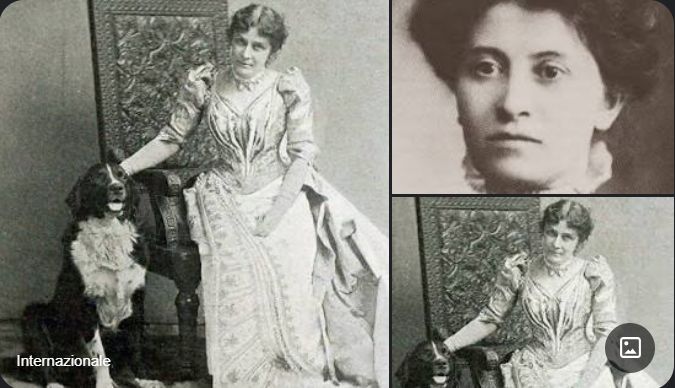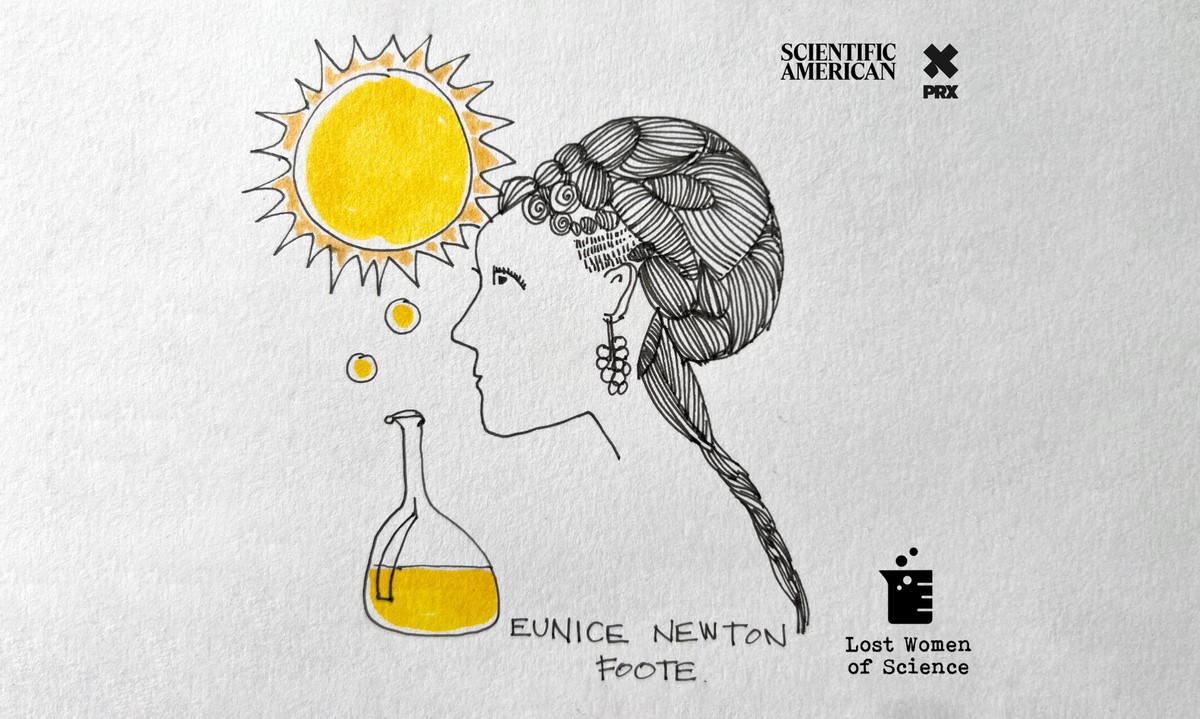The secret heroine who first discovered the greenhouse effect: Who is Eunice Newton Foote?
She was the first person to discover the greenhouse effect and its role in warming the Earth's climate.

She was the first scientist to establish a connection between rising carbon dioxide levels and the warming of the atmosphere. Eunice Newton Foote made a remarkable discovery in the 1850s that contributed to modern climate science.
Global warming is one of the biggest problems facing our planet. Scientists' findings regarding climate change date back much further than we thought. And among the pages of the history of science, it extends to a name you may not have even heard of: Eunice Newton Foote.
So who was Eunice Newton Foote?
Eunice Newton was born in Connecticut on July 17, 1819, as one of the 11 children of farmer and entrepreneur Isaac Newton Jr. and Thirza Newton. She spent most of her life in New York. She was a distant relative of Sir Isaac Newton.
She was educated at the Troy School for Girls, which encouraged students to attend science classes at a nearby university and had its own chemistry laboratories for experiments, so she could take science classes at a nearby boys' school. In 1841, she married Elisha Foote, a scientist, patent attorney, and later judge. They settled in Seneca Falls and had two daughters.
Eunice Newton Foote was a scientist and women's rights activist. She was one of the signers of the Seneca Falls Declaration at a historic meeting in 1848, one of the country's first organized events. Her husband, Elisha Foote, was among those who signed the declaration calling for 'women's civil, social and political rights'.
Eunice Newton Foote (July 17, 1819 – September 30, 1888) was an American scientist, inventor, and women's rights campaigner. She was the first scientist to confirm that certain gases warm when exposed to sunlight, and that therefore rising carbon dioxide (CO2) levels could increase atmospheric temperature and affect climate, a phenomenon now referred to as the Greenhouse effect. Born in Connecticut, Foote was raised in New York at the center of social and political movements of her day, such as the abolition of slavery, anti-alcohol activism, and women's rights. She attended the Troy Female Seminary and the Rensselaer School from age 17–19, gaining a broad education in scientific theory and practice.
Eunice Newton Foote made a remarkable discovery in the 1850s that contributed to modern climate science. She was the first person to discover the greenhouse effect and its role in warming the Earth's climate.
At that time, scientists were still debating why mountain peaks, which are closer to the sun, were colder than valleys; some thought it was due to the density of the air, and others thought it was due to the angle of the sun's rays.
Foote's simple but clever experiment, conducted 170 years ago, involved two glass cylinders filled with various substances, including moist air and carbon dioxide. She placed a thermometer inside each container and then left them in sunlight.
In her article titled 'Conditions Affecting the Heat of the Sun's Rays', which she wrote about the experiment in 1856, she wrote that the cylinder containing moist air became hotter than the cylinder containing dry air. A cylinder filled with carbon dioxide got even hotter and took longer to cool when it was removed from light.
She then came to a striking conclusion: An atmosphere dense with these gases meant a warmer Earth.
Eunice Newton Foote's paper was presented at the annual meeting of the American Association for the Advancement of Science. When the paper was published under her own name in the American Journal of Science and Arts a few months later, she became the first person to say in writing that the planet would be warmer if carbon dioxide levels were higher. This groundbreaking article published 167 years ago, made a direct connection between carbon dioxide and the warming of our climate.
It was still three years before John Tyndall, a scientist living in England, published his famous article describing the gases responsible for the greenhouse effect, which made him known as the 'father of climate science'.
After publishing his findings, Foote published his second study on atmospheric static electricity in the journal Proceedings of the American Association for the Advancement of Science. These were the first physics works published by a woman in the United States.
She continued her work in women's rights and received a patent for rubber shoe padding in 1860. She passed away on September 30, 1888, at the age of 69. There is not a single photograph or portrait depicting him, except for those that need verification on the internet.
His research was virtually lost among the dusty pages of history for more than 100 years following his death. The scientific article, which would put his name among the leading climate scientists, was forgotten until it was discovered by chance by a geologist in 2011.
Why did Foote's work disappear for so long?
Scientist, historian, and biographer Roland Jackson, in his article titled 'Eunice Foote, John Tyndall and a Problem of Priority' published by the Royal Society, states that "Eunice Foote died not only because of the absence of an academic community in America and poor communication with Europe but also because of two factors." She was more disadvantaged: her gender and her amateur status,” he writes.
“Although she failed to recognize the distinction between solar radiation and heat radiated from the earth, this work deserves recognition,” Jackson wrote in his article, adding that Foote was the first to recognize the ability of carbon dioxide and water vapor to absorb heat, making a direct connection between the variability of atmospheric components and climate change.
Katharine Hayhoe, a climate scientist at Texas Tech University, describes Foote and her early climate change studies as "extremely prescient." Hayhoe is now working with other historians, writers, and scientists to introduce Foote's work to the world.
Yes, finally the scientific community seems to be starting to recognize her early contributions. “It's an honor to be part of a family tree that includes someone like Eunice,” says Liz Foote, Eunice Newton Foote's relative who earned a doctorate in environmental studies in Hawaii. “I'm so excited that we can hear more of her story now.”
--------------------------------
Eunice Newton Foote, Mother of Greenhouse Effect
Her work was summarised in The Annual of Scientific Discovery in 1857, but those who read her results did not see how to make use of it in day-to-day life.
https://www.newindianexpress.com/xplore/2023/Nov/15/eunice-newton-foote-mother-of-greenhouse-effect-2633078.html
The Woman Who Demonstrated the Greenhouse Effect
Eunice Newton Foote showed that carbon dioxide traps the heat of the sun in 1856, beating the so-called father of the greenhouse effect by at least three years. Why was she forgotten?
https://www.scientificamerican.com/article/the-woman-who-demonstrated-the-greenhouse-effect/

